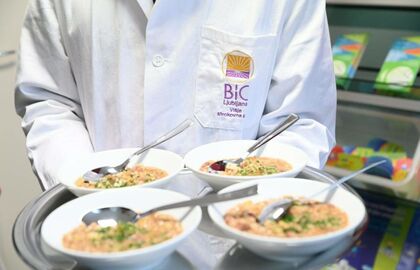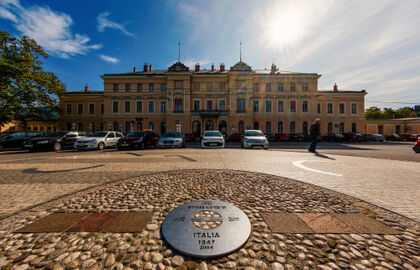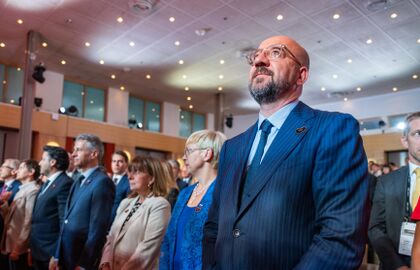Slovenia is a country of versatile landscapes and diverse climate. Its nation has a long history and an interesting future, that you can help shape.
A nation with more than a 1000-year long history. A country of versatile landscapes and diverse climate. A small place with lots of differing cultural influences. A pioneer in many fields with ground-breaking achievements.
Slovenia is one of the most water-rich European countries in Europe while also boasting potable water of incredible quality. In Slovenia, drinkable tap water is a norm.
Situated in Central Europe, Slovenia covers an area of 20,273 km2 (half the size of Switzerland). It borders Italy, Austria, Croatia and Hungary, and stretches across the Alps, the Dinaric Alps and the Pannonian Plain to the Mediterranean. This ensures that Slovenia has three different types of climates: Alpine, Sub Mediterranean and Continental. Also, due to its location as well as its history, the impact of many different cultures can be traced across its territory.
Despite its relatively small size, it is a convergence point for a range of different landscapes, each with its own characteristics and unique features. This gives nature lovers ample choices for outdoor activities, one of the reasons Slovenia regularly tops quality of life charts.
Slovenia’s two million inhabitants speak Slovenian, a southern Slavic language (written in Latin alphabet). Most Slovenes also speak at least one foreign language, with English being the most common.
Though Slovenia has been an independent country for only 30 years, its rich history spans over 1,400 years. In the early seventh century, Slovenes founded the first Slavic state - the principality of Carantania - under the leadership of King Samo. Carantania existed for almost 300 years and was widely recognised for its democratic organisation and the sovereignty of its people. However, Slovenian ancestors then came under the foreign control and, for the next 1,000 years, they either lived under the rule of the Habsburg monarchy or as part of the Austro-Hungarian Empire.
Following the end of the WWI, Slovenia joined the Kingdom of Serbs, Croats and Slovenes (later Kingdom of Yugoslavia), and after the WWII, it was part the Socialist Federal Republic of Yugoslavia where it had the status of a republic with its current borders.
After more than 70 years of living in Yugoslavia, Slovenians voted to leave the country in 1990 and declared Slovenia as an independent state in June 1991. Another important milestone for the country took place in 2004 when Slovenia integrated economically and politically with western Europe, joining the European Union and NATO.
Slovenia is a parliamentary democracy republic with a multi-party system. The head of state is the president, who is elected by popular vote. He or she is the commander-in-chief of the Slovenian armed forces but his role is mainly representative.
The executive and administrative authority in Slovenia is held by the Government of Slovenia, headed by the Prime Minister and the council of ministers or cabinet, who are elected by the National Assembly. The legislative authority is held by the bicameral Parliament of Slovenia but the bulk of power is concentrated in the National Assembly, which has 90 members.
Slovenia's 12 statistical regions have no administrative function and are subdivided into two macroregions for the purpose of the Regional policy of the European Union. These two macroregions (NUTS-2) are:






